Abstract
Surgical departments treat two groups of inpatients--the simple and the complex--consequently a single average fails to describe the use being made of the occupied beds. Using decision support techniques, we show why indicators such as the average length, the average occupancy and the average admissions mislead. Furthermore, by analysing the fluctuating pattern of weekly admissions we show how weekends and the Christmas holiday periods impact on bed usage. Next, we demonstrate that flow process models can be used to describe how the in-patient workload concerns two groups of patients. On an average day, 71.4% of the beds contained patients who will have an average (exponential) stay of 4.8 days, and the other beds, 28.6%, contain patients who will have an average (exponential) stay of 22.8 days. The article concludes by demonstrating the short and long-term impact on daily admissions of a 10% change in four different parameters of the model. The data used come from a surgical department in Adelaide, as UK data sets report finished consultant episodes rather than completed in-patient spells.
Full text
PDF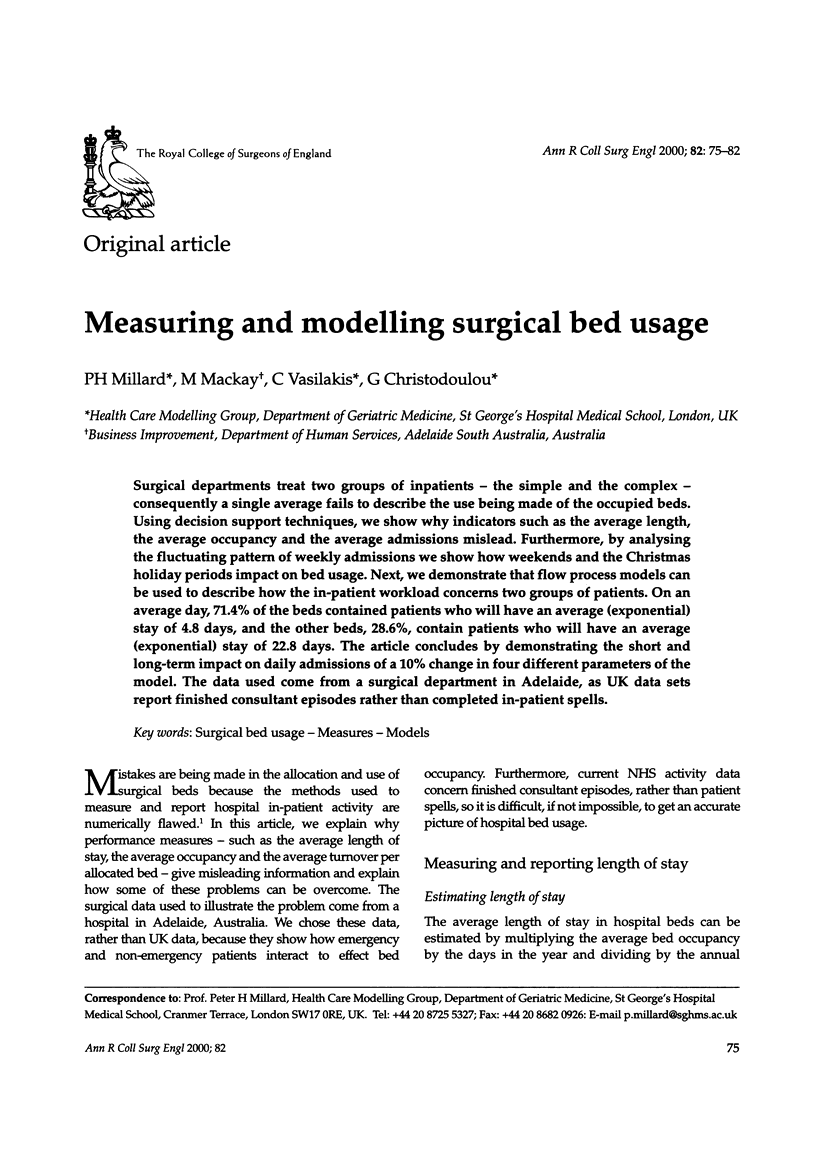
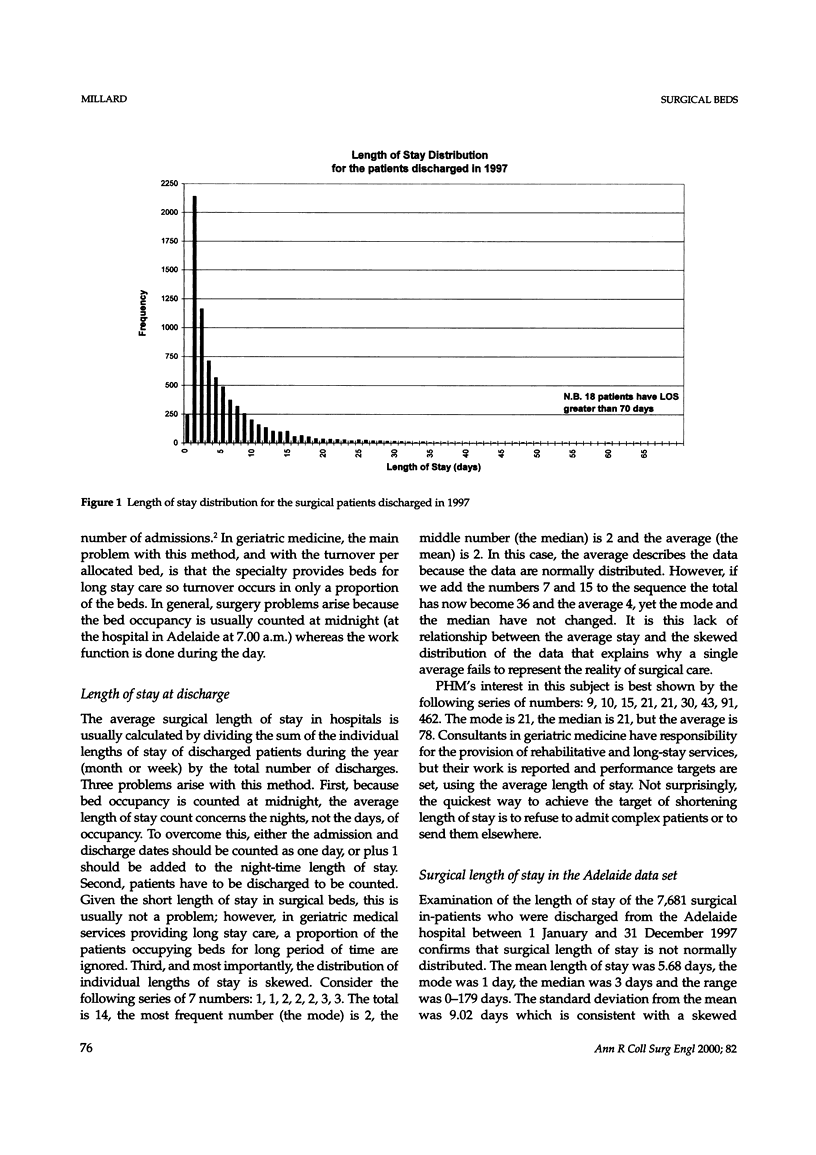
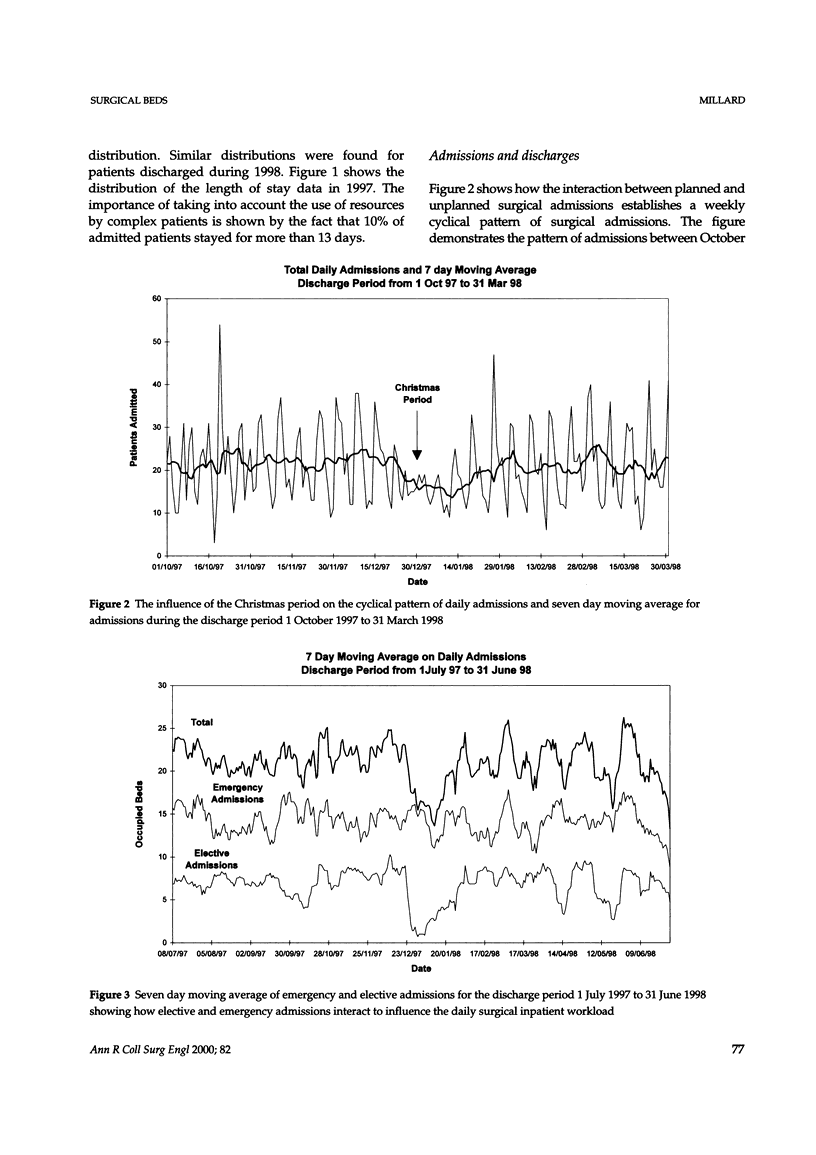
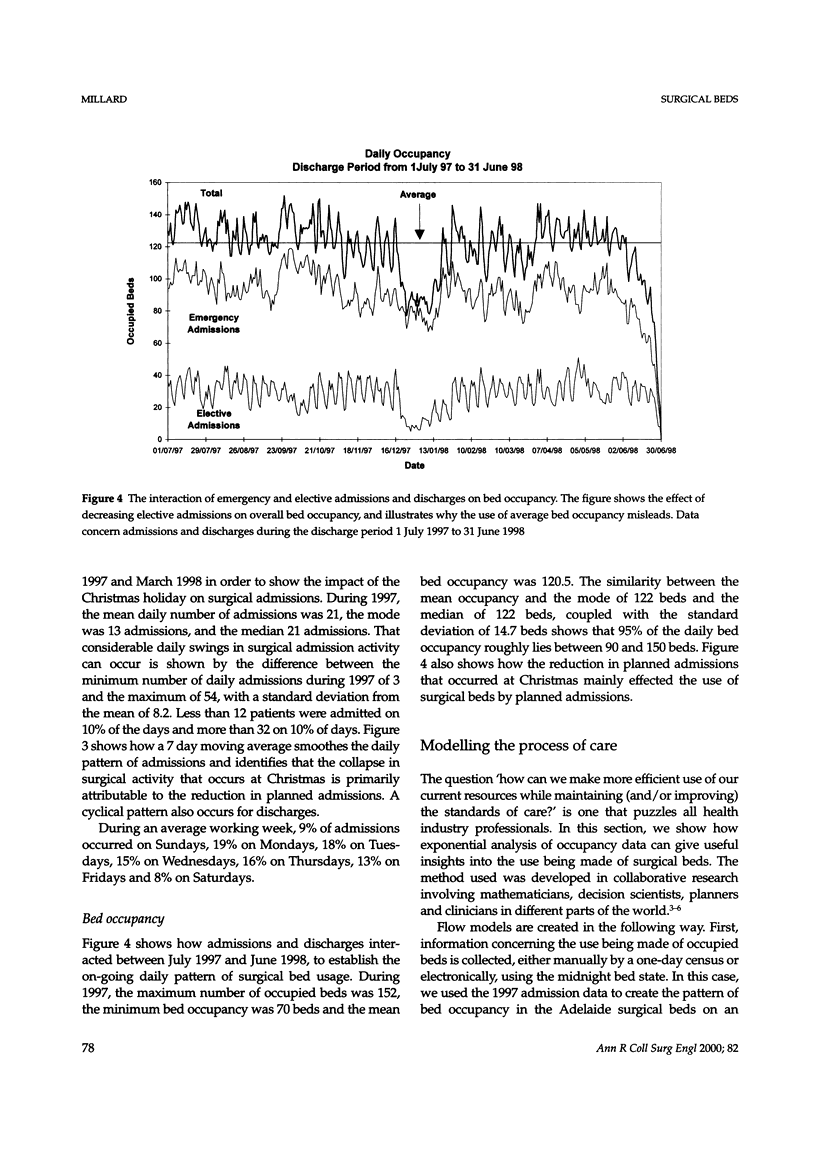
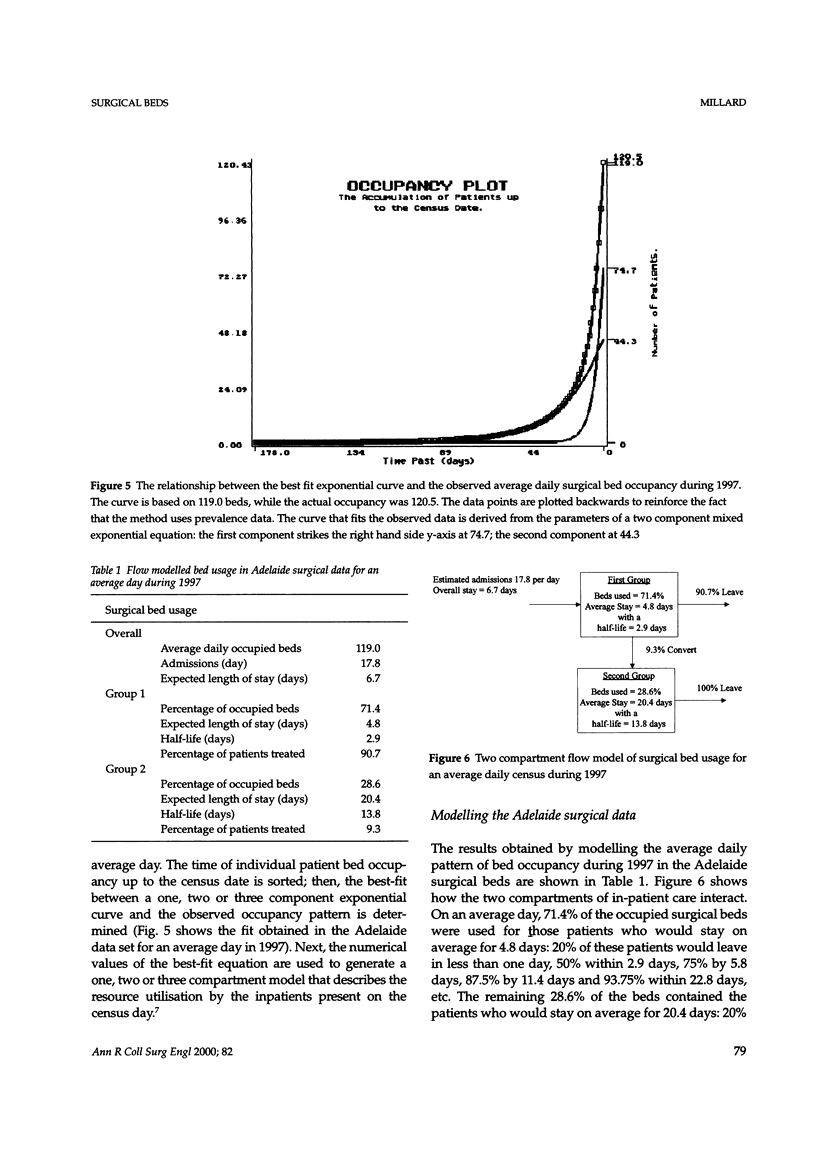
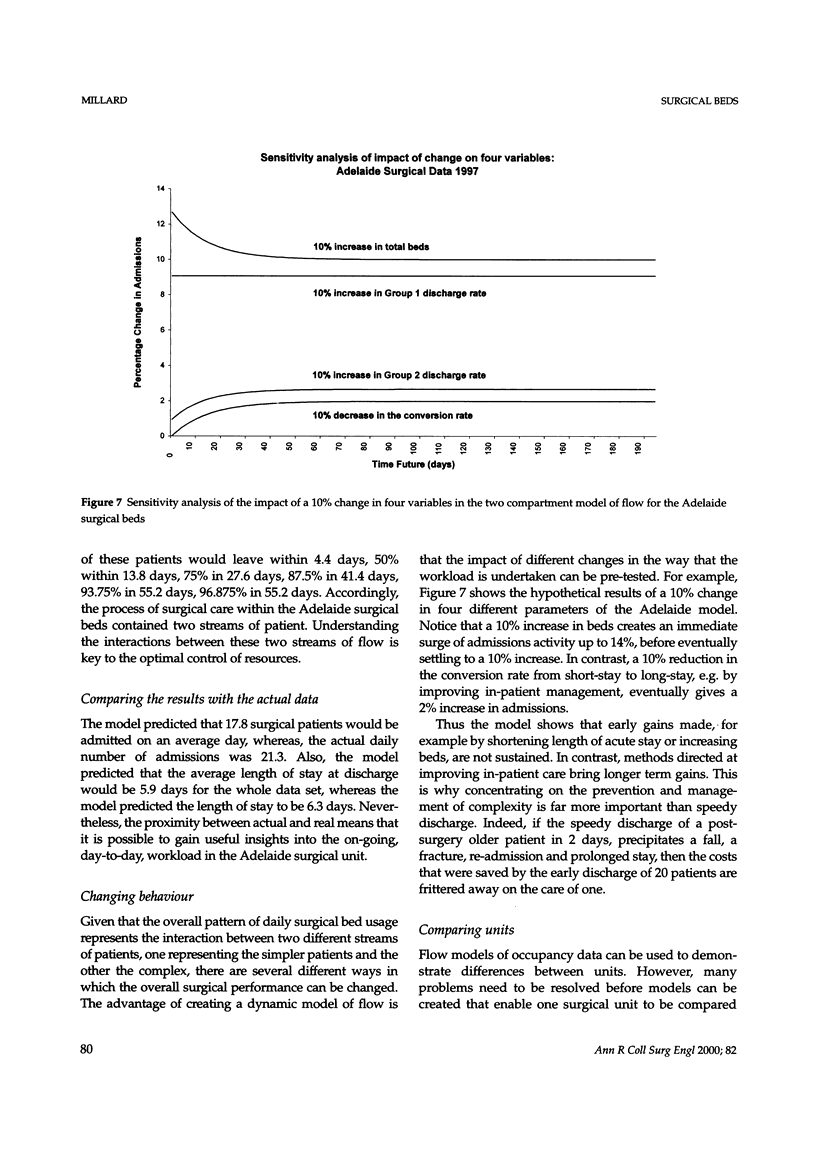
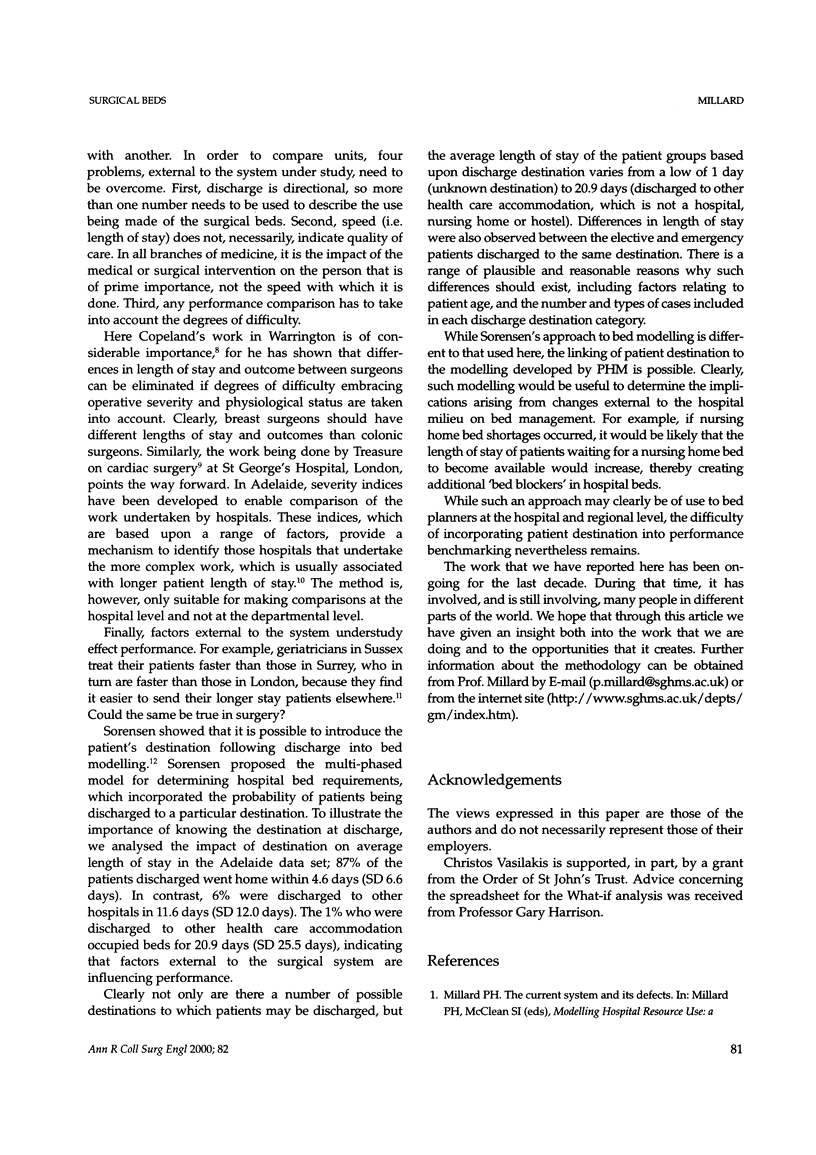
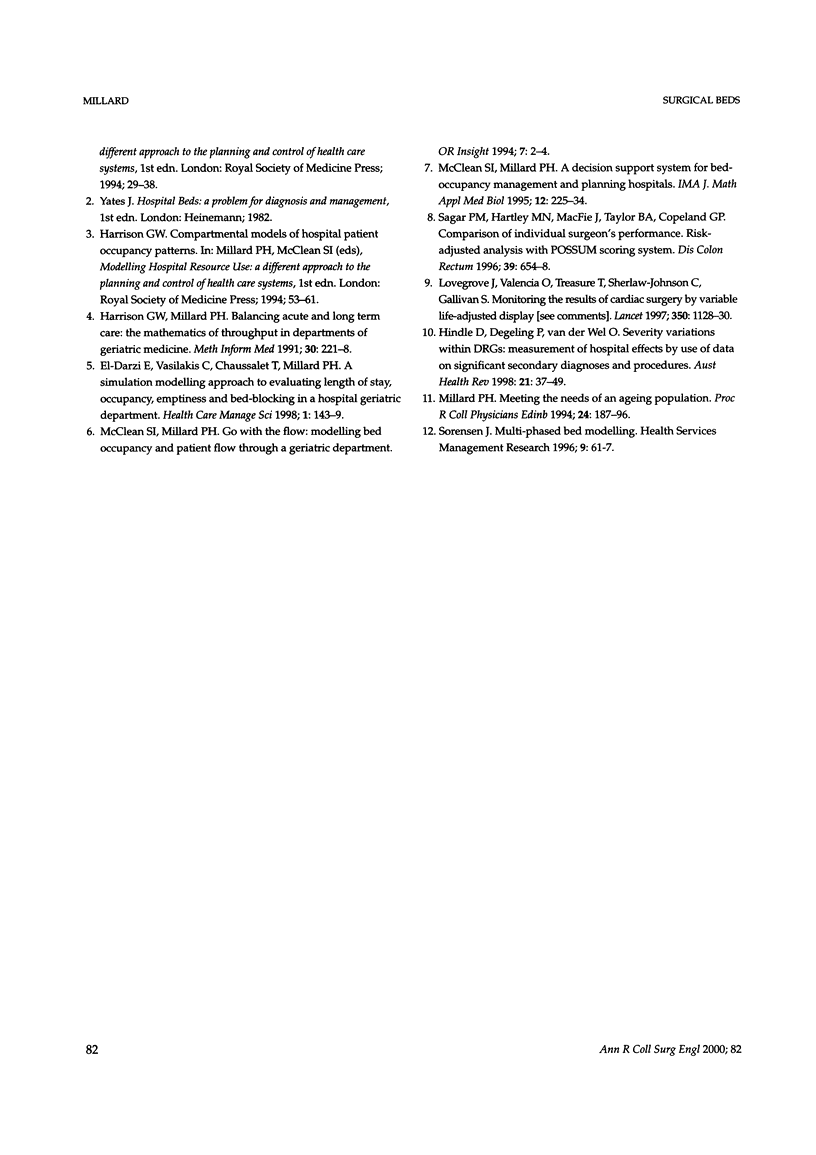
Selected References
These references are in PubMed. This may not be the complete list of references from this article.
- Cottee M., Millard P. H. Performance comparison in geriatric medicine: a study in one department. IMA J Math Appl Med Biol. 1995 Sep-Dec;12(3-4):225–234. doi: 10.1093/imammb/12.3-4.225. [DOI] [PubMed] [Google Scholar]
- Harrison G. W., Millard P. H. Balancing acute and long-term care: the mathematics of throughput in departments of geriatric medicine. Methods Inf Med. 1991 Aug;30(3):221–228. [PubMed] [Google Scholar]
- Hindle D., Degeling P., van der Wel O. Severity variations within DRGs: measurement of hospital effects by use of data on significant secondary diagnoses and procedures. Aust Health Rev. 1998;21(1):37–49. doi: 10.1071/ah980037. [DOI] [PubMed] [Google Scholar]
- Lovegrove J., Valencia O., Treasure T., Sherlaw-Johnson C., Gallivan S. Monitoring the results of cardiac surgery by variable life-adjusted display. Lancet. 1997 Oct 18;350(9085):1128–1130. doi: 10.1016/S0140-6736(97)06507-0. [DOI] [PubMed] [Google Scholar]
- Sagar P. M., Hartley M. N., MacFie J., Taylor B. A., Copeland G. P. Comparison of individual surgeon's performance. Risk-adjusted analysis with POSSUM scoring system. Dis Colon Rectum. 1996 Jun;39(6):654–658. doi: 10.1007/BF02056945. [DOI] [PubMed] [Google Scholar]
- Sorenson J. Multi-phased bed modelling. Health Serv Manage Res. 1996 Feb;9(1):61–67. doi: 10.1177/095148489600900107. [DOI] [PubMed] [Google Scholar]
- el-Darzi E., Vasilakis C., Chaussalet T., Millard P. H. A simulation modelling approach to evaluating length of stay, occupancy, emptiness and bed blocking in a hospital geriatric department. Health Care Manag Sci. 1998 Oct;1(2):143–149. doi: 10.1023/a:1019054921219. [DOI] [PubMed] [Google Scholar]


